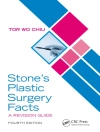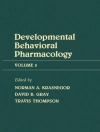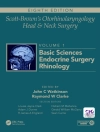This book presents a comprehensive update on some crucial aspects of brain and spinal tumoral pathology that strongly influence the current surgical management. It covers a range of topics, from the latest results of molecular diagnosis for tumors still considered unsuitable for surgical excision, to the increasing use of minimally invasive approaches made possible by the wide application of neuroendoscopic techniques.
The first three chapters discuss basic research on the potential benefits of new, less invasive and more sophisticated techniques for brain exploration. The following four chapters examine how modern instruments for intraoperative visualization are modifying the traditional paradigm of classical neurosurgery. Two chapters describe he recent understanding of two of the most relevant intracranial tumors that still pose challenges for successful treatment, namely the tumor of the pineal region and ependymomas. Two more chapters are devoted to the management of brain tumors, the first exploring the valuable information that can be derived from biopsy when properly carried out, and the second detailing an innovative therapeutic modality that increases the intratumoral level of antineoplastic agents while minimizing body toxicity and side effects. The book also delves into congenital or acquired malformations of the brain, the skull base, and the cranial vault in three of its remaining chapters. Finally, the last chapter addresses the traumatic pathology of the spine, whose etiology and management have changed significantly in recent years.
İçerik tablosu
1. Multimodality Structural and Functional Monitoring in Brain Tumor Surgery – The role of IONM and IOUS.- 2. Operative Adjuncts in Pediatric Brain Tumor Surgery with a Focus on Suprasellar Tumors.- 3. From Microscopic to Exoscopic Microsurgery: Are we facing a change of paradigm?.- 4. Anatomical features of the ventricular system relevant to endoscopic surgery for hydrocephalus.- 5. Endonasal route for tuberculum and planum meningiomas.- 6. Endoneurosurgical Resection of Parenchymal and Intraventricular Lesions using Tubular Retraction System.- 7. Infratentorial and Supratentorial Ependymoma.- 8. Direct Administration of Chemotherapy and Other Agents into the Fourth Ventricle to Treat Recurrent Malignant Brain Tumors in Children.- 9. Pediatric Brainstem Tumor Biopsy: Sur, gical Planning and Execution for Maximal Safety and Tissue Yield.- 10. Complication avoidance in Surgery for Chiari Malformations.- 11. Pediatric Spinal trauma.- 12. Os odontoideum: Analysis of 260 patients. Etiology, presentation, treatment and recommendations.
Yazar hakkında
Prof. Di Rocco is an internationally recognized pediatric neurosurgeon who has performed more that 12, 000 neurosurgical operations on brain and spinal cord tumors, hydrocephalus, arachnoid cysts, craniosynostosis, cerebral and spine malformations (hemimegalencephaly, cortical dysplasia, lipomyelomeningocele, myelomeningocele, spinal lipoma, Chiari type I malformation), neurophacomatoses and epileptic disorders. Since May 2014, Prof Concezio Di Rocco has moved to Hannover, Germany to become the Director of Pediatric Neurosurgery at the International Neuroscience Institute (INI).
He is the main Editor of Child’s Nervous System, the Official Journal of the International Society for Pediatric Neurosurgery, European Journal for Pediatric Neurosurgery, Japanese Society for Pediatric Neurosurgey, Korean Society for Pediatric Neurosurgery, Brasilian Society for Pediatric Neurosurgery.












